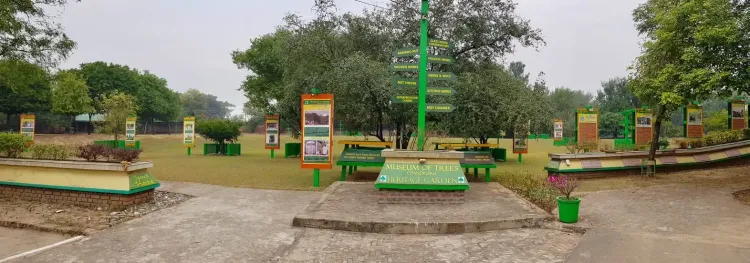Is Manuka a New Highlight in Chandigarh's Museum of Trees?

Synopsis
Key Takeaways
- The Museum of Trees adds a Manuka tree symbolizing ecological friendship.
- The Kiwi Grove features notable New Zealand species.
- Curator D.S. Jaspal emphasizes the educational role of the grove.
- The museum serves as a living repository of cultural heritage.
- Support from the Union Ministry of Culture underscores its significance.
Chandigarh, Oct 28 (NationPress) The Museum of Trees in Chandigarh, with support from the Union Ministry of Culture, has recently unveiled a new attraction by planting a Manuka (Leptospermum scoparium) tree, celebrated globally as the origin of the famed Manuka honey.
The sapling, cultivated at the museum's Plant Breeding Centre, was planted in the kiwi grove, an area dedicated to the remarkable trees of New Zealand. This grove is already home to three extraordinary species from New Zealand: kauri, totara, and black beech.
The curator of the Museum of Trees, D.S. Jaspal, who authored “Tryst with Trees: Punjab’s Sacred Heritage”, shared with IANS that the Kiwi Grove is designed as a space for education and discovery, allowing visitors to experience the biodiversity of distant regions and to appreciate how trees link different cultures and continents.
Backed by the Ministry of Culture and supported by the Chandigarh Nature and Health Society, the Museum of Trees stands as the world’s pioneering initiative focused on the conservation and propagation of sacred, rare, and culturally significant trees via scientific methods. With over 350 species from India and beyond—including true genotypes of 12 sacred trees of Sikhism that have been successfully cloned—the museum acts as a living archive of botanical and cultural legacy.
During the planting ceremony, Aman Jaspal, the museum's Assistant Curator, stated, “The Kiwi Grove represents the enduring friendship between India and New Zealand, reminding us that ecological balance transcends borders.”
The ceremonial planting of the Manuka sapling was performed by Joanna Gill, sister-in-law of former New Zealand cricket captain Glenn Turner, marking a significant gesture of ecological partnership between India and New Zealand.
The inclusion of the Manuka tree aligns with the museum’s goal to bridge global cultures through the shared heritage of trees and to highlight the diverse tree legacy within Chandigarh—fostering awareness, curiosity, and stewardship for the natural environment.







